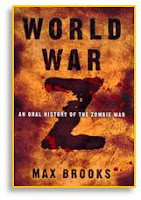Since last fall, I have been following small articles that
appeared in the back of newspapers (yes, hardcopy print media) that gradually
grew larger and moved up front. They
concerned an outbreak of a virus that first appeared in Yemen in September of 2012
and was attributed to contact with goats.
Gradually the virus spread within the Middle East and now is called MERS
CoV for Middle East Respiratory Syndrome Coronavirus. It is SARS-like, causes severe respiratory
distress, and is easily transmitted.
While all the cases have originated in Jordan, Qatar, Saudi
Arabia, Jordan and the United Arab Emirates, this new virus has traveled to
several European countries as well as Tunisia via tourists, healthcare workers
and businessmen. As they say in World War Z,
“Airplanes are the perfect transmission medium.” In May, a 65-year-old man died of MERS in
northern France and his hospital roommate was also infected. There has been “limited local transmission”
among people who had been in close contact with the confirmed cases in people
returned from the Middle East.
 |
| MERS Coronavirus |
As the number of cases spread, the association goats
were dismissed as the virus's natural reservoir. The disease is now known
to spread through person-to-person contact and the MERS
mortality rate has hit 60%. From
September 2012 to date, WHO has been notified of a total of 77
laboratory-confirmed cases of infection worldwide, including
40 deaths. This may seem like a tiny
amount but the World Health Organization (WHO) has called MERS CoV, “the
greatest global health concern.”
Some cases are asymptomatic, which means the infected people
can carry and spread the disease without showing any signs of the illness. This silent infection might skew the
mortality rate, which would be lower if the asymptomatic carriers were
counted.
The majority of MERS victims have been older men. That’s interesting because viruses don’t
usually have gender biases. Now Discover magazine has offered a possible
explanation. In an article called, “Purdah?
I Hardly Know Ya! Social Influences on Middle East Respiratory Syndrome,”
it says that the Islamic face veil, or niqab,
may be serving as a filter mask, protecting women from infection. In Saudi Arabia, virtually all women wear the
niqab as well as the hijab head scarf.
 |
| Niqab and Hijab |
Author Rebecca Kreston speculates that the niqab protects women from inhaling the
virus as well as “limiting contact between contaminated fingers and the mucosal
membranes of the face.” Ms. Kreston adds
that, “ . . . the prohibition of casual contact between unrelated sexes and the
social seclusion of women through the enforcement of purdah may
have resulted in an asymmetrical transmission effect, in which only men were
exposed and women were unintentionally “barred” from exposure.” Saudi women don’t go out in public as much as
men do as they must have the permission of a husband, father, or brother to do
so.
Most of the women who have been infected have been either working in
hospitals or receiving medical treatment, which put them in contact with other
individuals, including male doctors, they might not otherwise have encountered.
It would be interesting indeed if the mechanisms by which Wahabi Muslim
imams have isolated, repressed and controlled women in Saudi Arabia turn out to
protect them from this easily transmitted virus. Should MERS CoV spread further to infect and
kill a disproportionate number of the male population, it’s not too great a
leap to see the possibility of women gaining more authority in Saudi
Arabia. After all, if the men get sick
and die, someone will have to run the Kingdom.
For more information on what it’s like to be a woman in
Saudi Arabia and live under the restrictions of Wahabi Islam, see my previous
post on the
novels of Zoë Ferraris. The title of her third book, City of Veils, might predict what Saudi Arabia's cities will look like in future months.









